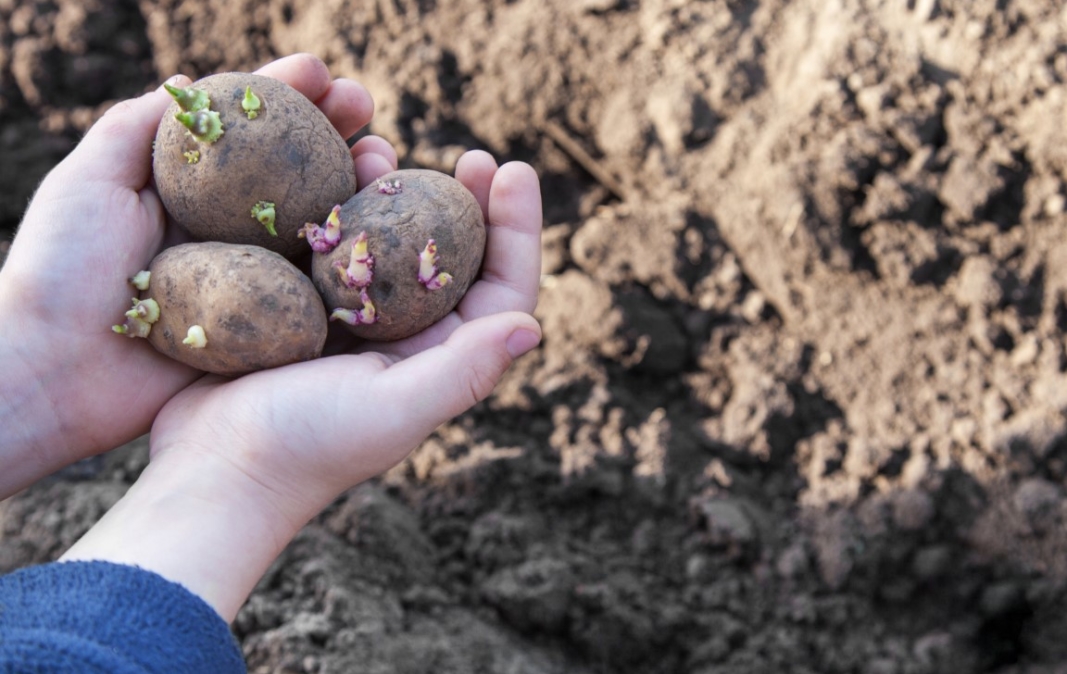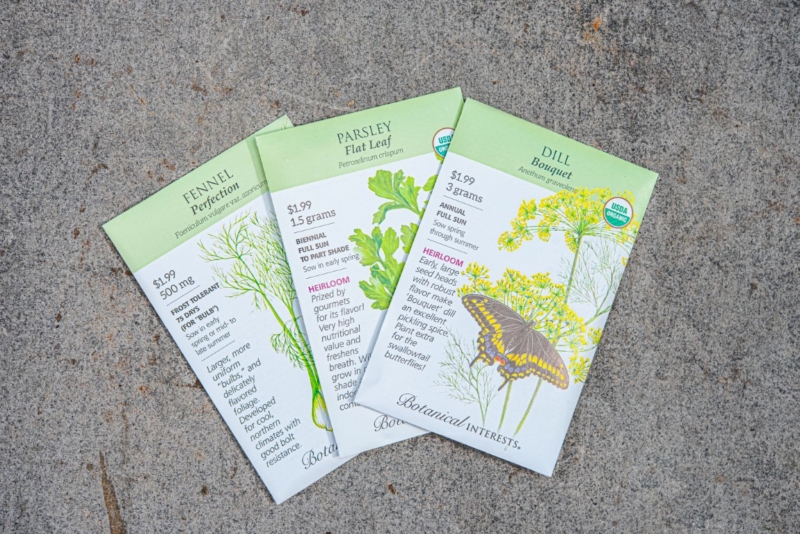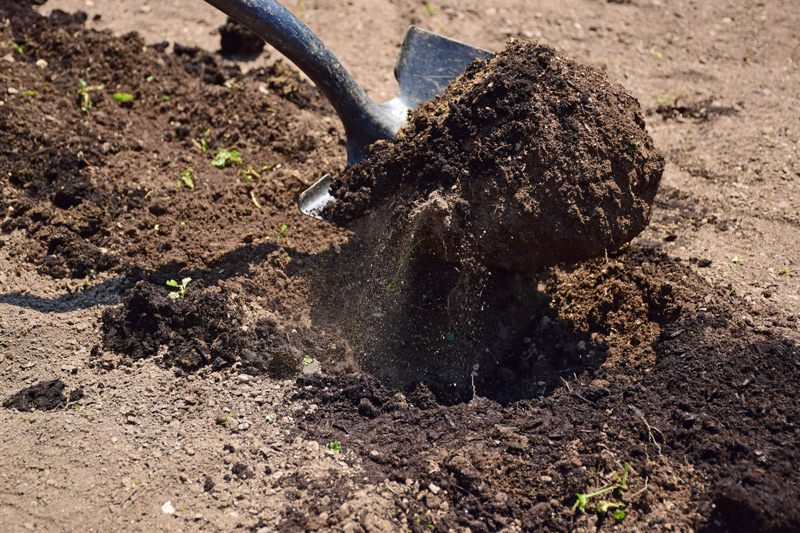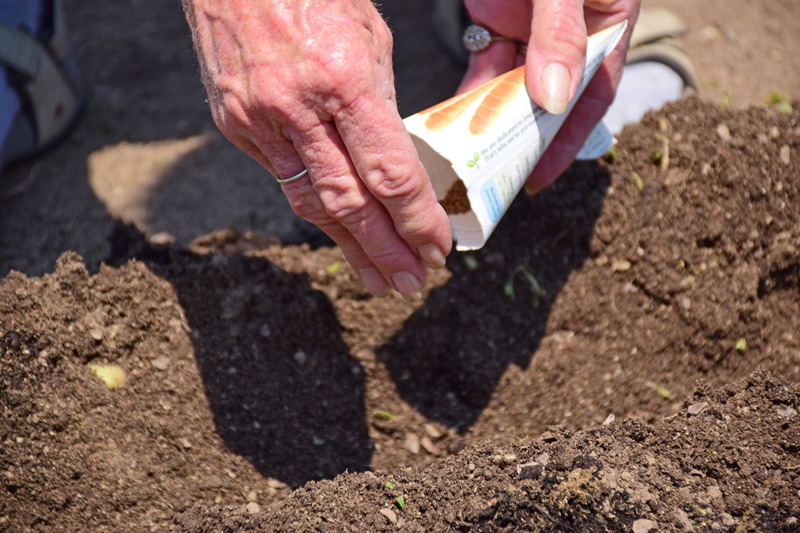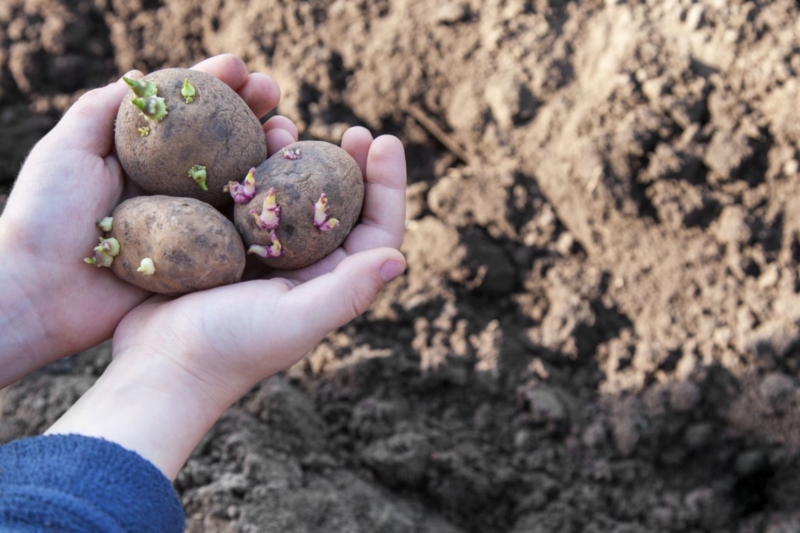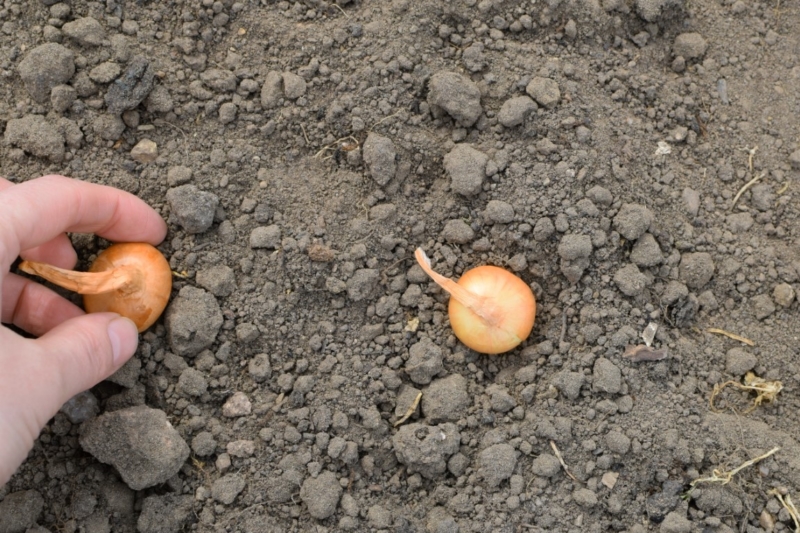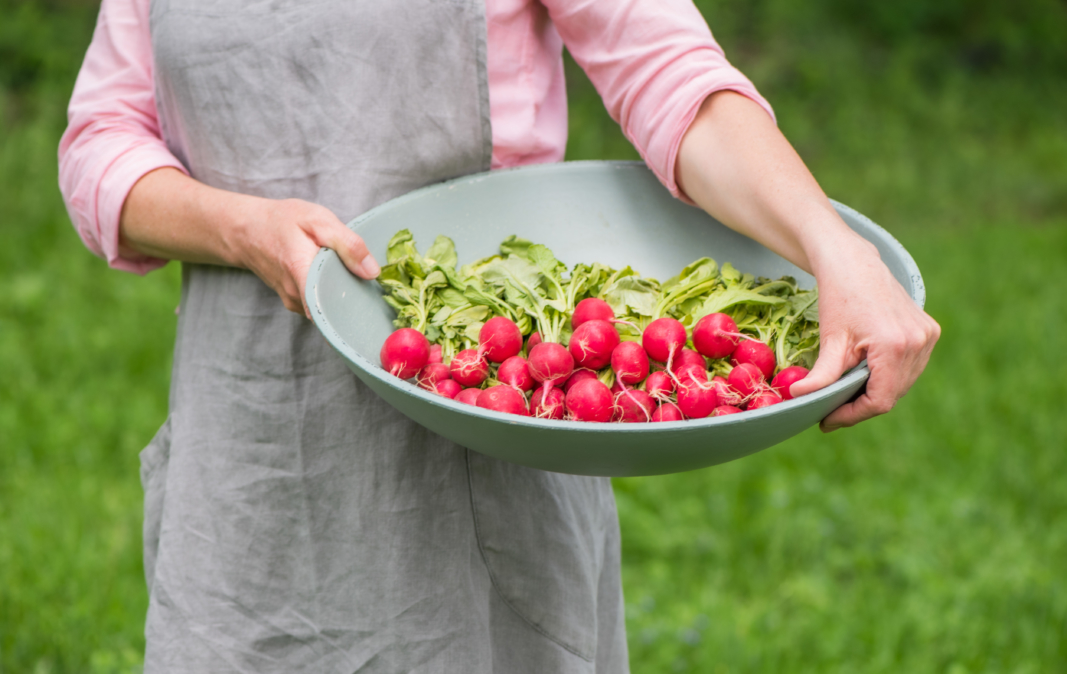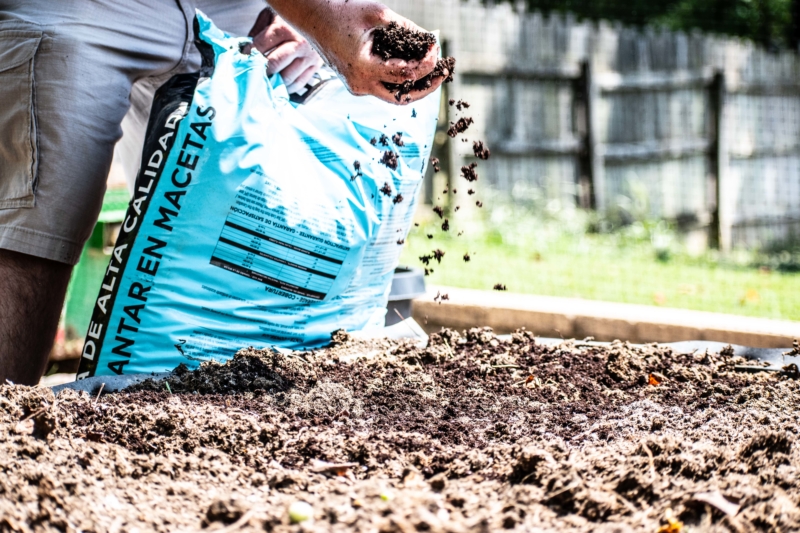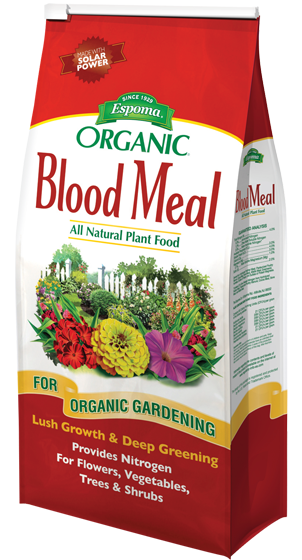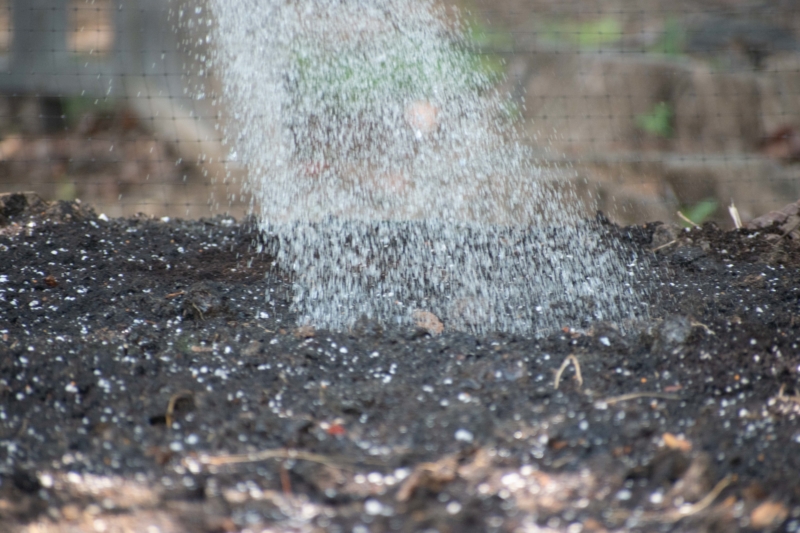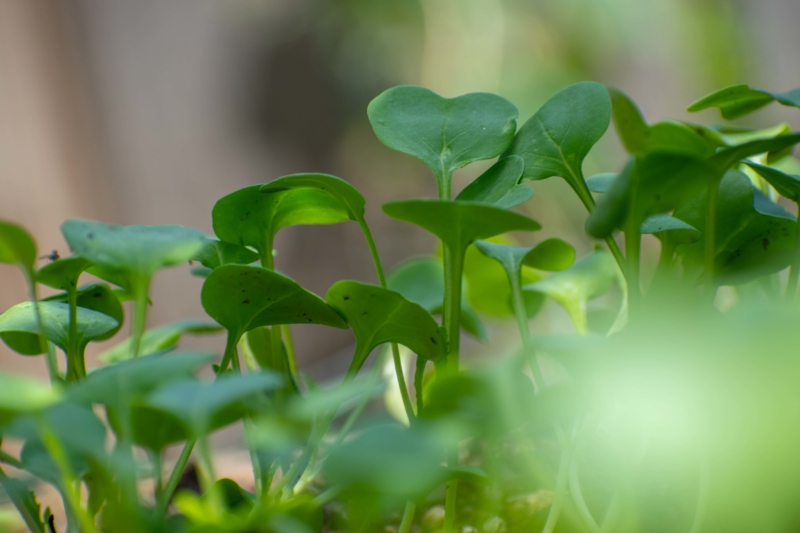How to Start a Vegetable Garden with Your Family
With spring officially here, now is a great time to start a cool season vegetable garden with herbs, potatoes, onions and leafy greens. This is a great activity to bring the whole family outdoors for weeks on end, as you plant your seeds, watch them grow, and finally harvest mature veggies later this season. There are many plants that can be harvested quickly to enjoy the rewards of your work while you are waiting on your slower growing vegetables to mature, and all you need to get started is a small area with plenty of sunlight, seeds and a few supplies.
Virginia may still have some nights with frost, so at this point you will want to choose frost hardy plants that can tolerate the cool nights of spring. Greens, root vegetables and a variety of herbs are good picks.
Supplies
- Shovel, hoe or small trowel
- Organic compost, such as Bumper Crop (2 cu. ft. bag covers 25-50 sq. ft.)
- Organic fertilizer, such as Plant-tone or Garden-tone (3.5 lbs. per 50 sq. ft.)
- Cool season seeds
- Herbs: Cilantro, dill, fennel and parsley
- Leafy Greens: Cabbage, kale, loose-leaf lettuces and spinach are a few good picks. Loose-leaf lettuce will harvest quickly so are great picks for planting with your kids.
- Root vegetables: Garlic, potatoes and onions
Prepare Your Garden Bed
Regardless of the crops you will be planting, you can set your plants up for success by preparing the soil in advance. To give your veggies a boost, turn up the soil in the area you will be planting with a hoe, shovel or trowel. Next, spread your organic compost over the area in a 1/2 inch to 1 inch layer and add about 3.5 lbs. of fertilizer per 50 sq. ft. of soil. Mix both into your turned up soil.
How to Start Seeds in the Ground
The plants suggested in this post are all frost hardy, and can handle some of the cool weather we may still experience between now and our final frost date later this season. You can work with other plants, but keep in mind that the average last frost date of our area is still several weeks away. You may need to take steps to keep non-frost hardy plants safe from the cold weather.
Planting Steps
For more detailed instructions on direct sowing seeds in the ground, you can see our post on starting fall seeds. The method of direct sowing in the spring is the same.
- Review each seed packet before planting to make sure that you are planting at the correct depth and spacing.
- Make a groove in the soil to the depth indicated on your seed packet. Sow seeds along the groove spaced according to the directions on your seed packet.
- Cover the seeds gently with soil, and water carefully with a gentle spray of the hose or a watering wand.
When to Harvest
Most cool season vegetables are at their best when temperatures are 55-65 degrees and should be harvested before the arrival of summer heat. When temperatures jump into the 80’s, they may begin to flower. This causes the plant to produce fewer, less flavorful leaves. Gardeners call this ‘bolting’. Some herbs, such as fennel and dill have flavorful seeds and you can allow them to continue growing into the summer to enjoy their flowers and seeds.
Planting Onions, Potatoes and Garlic
Onions, potatoes and garlic are a bit different from our other cool season veggies in that you do not start them from a typical seed. Rather, you actually use part of a seed potato or dried onion or garlic bulb. Avoid using traditional potatoes, onion and garlic purchased from the grocery store as they are treated with sprout inhibitors to prevent them from sprouting on the shelf or in your pantry.
Seed Potatoes
- Prepare your seed potatoes for planting a couple of days ahead of time by cutting the potatoes into large pieces, each with one or two “eyes”
- Spread them out to dry indoors for a couple of days to prevent rot once they are in the soil.
- Place seed potato cuttings about a foot apart in holes approximately 2-3 inches deep, with the cut side down. Cover with soil.
- Water with a gentle spray of the hose or with a watering wand.
Dried Onions
Onions can be planted from seed, but onion sets, which are just dried onions, will mature much faster.
- Plant your onion sets, placing bulbs approximately 6 inches apart and bury them no more than 1 inch deep in the soil.
- Water with a gentle spray of the hose or with a watering wand.
Dried Garlic
Garlic is grown from the individual cloves. Each clove will produce one ‘head’ of garlic.
- Separate the head of garlic into individual cloves
- Plant each clove approximately 4 – 6 inches apart and bury them no more than 1 inch deep in the soil.
- Water with a gentle spray of the hose or with a watering wand.
When to Harvest Garlic, Onions and Potatoes
Harvest your garlic and onion greens by pulling them out of the ground while they are still young, before they form bulbs. These are delicious in salads or as seasoning in other dishes. If you are growing them for the bulbs, leave them in the ground until summer, when the greens begin to yellow and fade. You should remove any flower buds so the plants will put more of their energy producing a larger bulb.
Harvest potatoes soon after the plants reach the flowering stage. At this time they are still small, thin skinned and called “new potatoes”. For larger, mature potatoes, wait until late summer or fall when the plants yellow and wither to the ground.
Feeding and Watering Your Plants
You can continue to fertilize your growing vegetables with an organic fertilizer throughout the growing season. Use 1/3 of a cup per plant, or 1 1/3 of a cup per 5 ft. row of plantings.
When watering newly planted seeds, be careful about washing them away. It is best to use a gentle spray from a hose or a watering wand to keep them moist as they begin to sprout and develop roots. Try to check daily and see that the soil is moist and water when it begins to feel dry. After they have grown to be about three inches or more, it’s a good time to spread mulch around the plants. One to two inches of straw will help to prevent weeds, conserve moisture and prevent the soil from eroding or splashing on to your vegetables. Now that your vegetables and herbs are off to a strong start, you can begin to water more deeply and less often. Still, try to check in every 1-2 days to see what is new or may need attention. If you have any questions about caring for your vegetable garden, let us know! We are happy to provide tips and advice.


